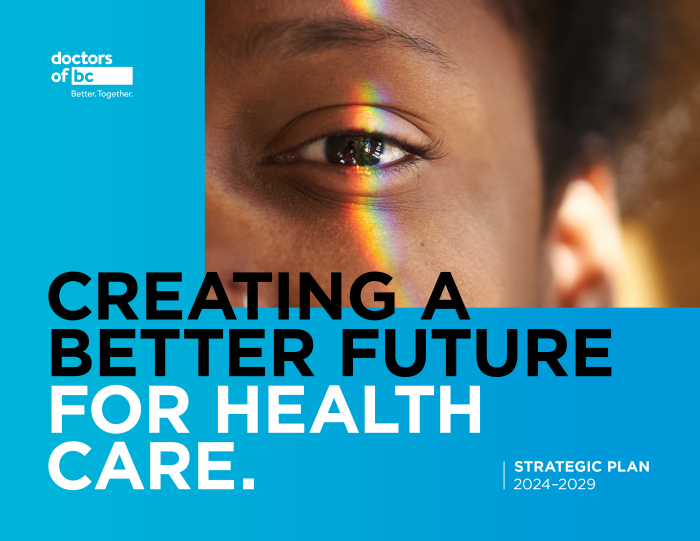- Managing your Practice
-
- Your Benefits
-

Introducing the ultimate Club MD experience
From work to play, and everything in between, we provide you with access to hundreds of deals from recognizable, best-in-class brands, elevating every facet of your life – from practice supports to entertainment, restaurants, electronics, travel, health and wellness, and more. Your Club MD membership ensures that these deals are exclusive to you, eliminating the need to search or negotiate.
Welcome to the ultimate Club MD experience. Your membership, your choices, your journey.
-
- Advocacy & Policy
-
- Collaboration
- News & Events
-

Stay Informed
Stay up to date with important information that impacts the profession and your practice. Doctors of BC provides a range of newsletters that target areas of interest to you.
Subscribe to the President's Letter
Subscribe to Newsletters
-
- About Us
-

Can there be too much of a good thing?
November 24, 2014
Together for Health
Recent media coverage has illustrated the dangers of overuse and mixing of prescription drugs (see Vancouver Sun). Medications are there to help ease a medical issue, but people often have multiple medical concerns, particularly as we get older. A drug may be targeted for one issue but when given to someone who is already taking a number of drugs can make a person feel worse, not better.
At Doctors of BC, we have recognized this problem and have implemented a Polypharmacy Risk Reduction initiative through Shared Care (a joint collaborative committee with the government) to address it.
The Shared Care Polypharmacy Risk Reduction initiative supports doctors to improve the management of elderly patients on multiple medications that may impact their safety and quality of life, especially the frail elderly. The initiative hopes to improve their quality of life and decrease hospital admissions through quality improvement measures such as, de-prescribing unnecessary medications and preventing adverse drug reactions.The concept is simple, but making it work involves many people and a clear understanding of the purpose.
It’s about safety and quality of life first and foremost. The key to making it work is collaboration. The initiative first started in residential care homes where physicians, pharmacists, care facility staff, families and patients are working together to review and evaluate medications. Including family members is essential because they’re often the first to notice changes in their loved one.
It’s early days, but the results of this phase of the initiative are encouraging – successful risk reduction, team-building, peer-mentoring, and anecdotal reports of residents who are now more alert and active. We’re spreading the initiative and focusing on bridging gaps in communication between hospitals and community where over-prescribing can be a problem.
If you feel that this is a concern for you or a family member, please discuss the situation with your family doctor.




